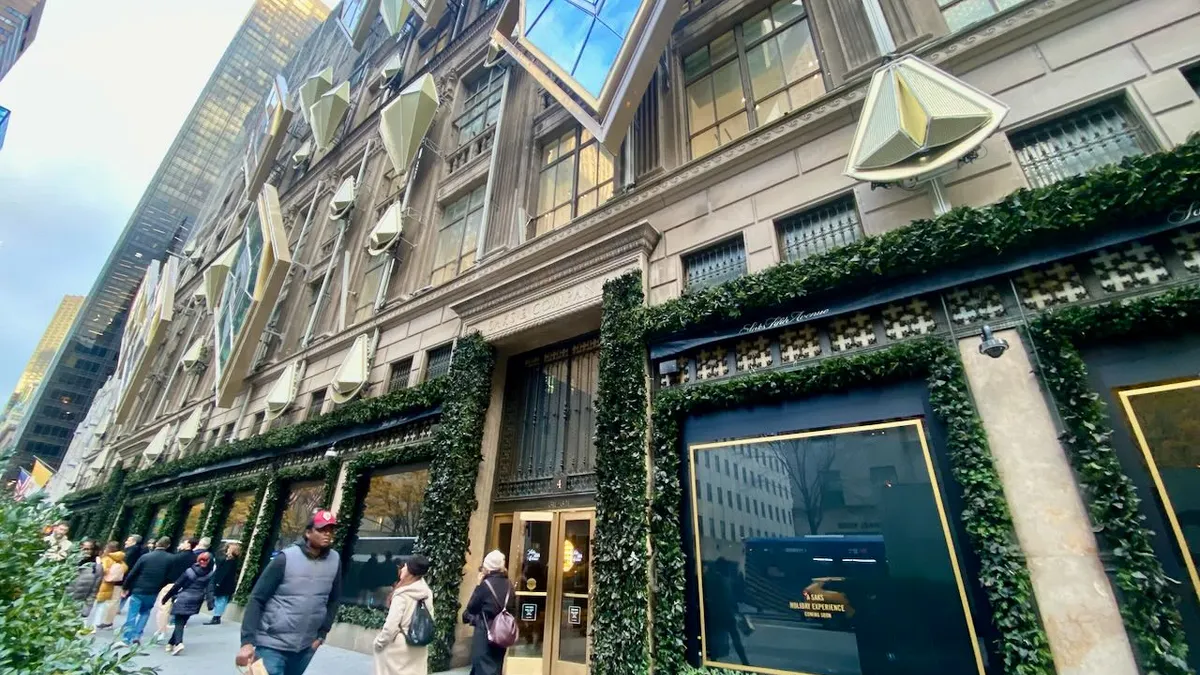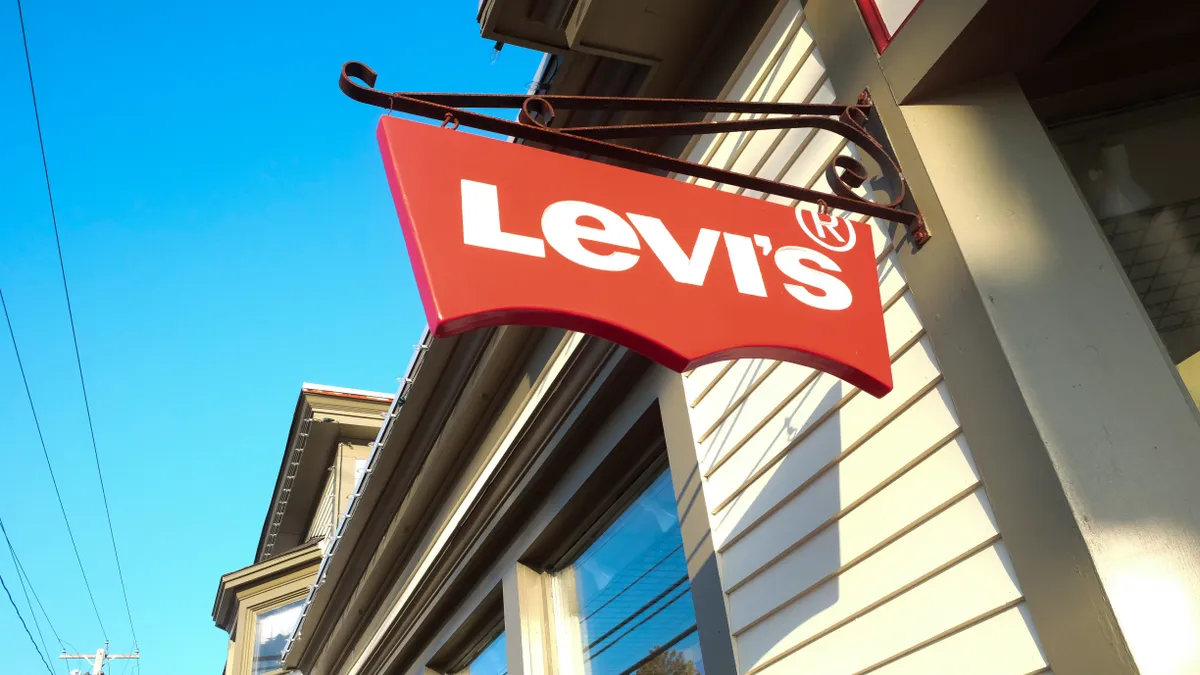The word "Ascena" isn't a Greek goddess, the structure of a molecule or even a term that can be found in any dictionary, anywhere. The name is made up, devised by a consulting firm in 2010 to replace "Dress Barn," a moniker chosen by founder Roslyn Jaffe in 1962, when she opened her first clothing store in Connecticut for working mothers.
Dress Barn's premise was a daring one at a time when women were expected to quit work once a baby arrived. And through a series of acquisitions of established brands, the company steadily grew to a conglomerate of eight apparel and accessories businesses. The company acquired discount apparel company Maurices in 2005, tween apparel company Justice (previously Limited Too) in 2009, Charming Shoppes' plus-size banners Lane Bryant and Catherines plus discount Fashion Bug in 2012 and Ann Inc. in 2015. Midway through that spree, in 2011, the company changed its name from Dress Barn Inc. to Ascena Retail Group.
"In recent years, we’ve become a fundamentally different company that extends well beyond the original Dress Barn concept and brand," CEO David Jaffe, the founder's son, said in a statement at the time. "We have become a family of retail brands, each serving a unique customer niche, each essential to our combined success."
The strategy has grown the company, now organized into premium, discount and plus-size tiers. Ascena last year saw $1.7 billion in sales and runs some 4,700 stores throughout the United States, Canada and Puerto Rico, along with its banners' e-commerce sites. But the new moniker hasn't saved it from declines in the past several years, in what has shaped up to be a saturated apparel market.
Ascena has more soul-searching to do.
Despite a turnaround that has included cost cuts and merchandising revamps, second quarter net sales fell to $1.72 billion from $1.75 billion in the year-ago period, mostly from a 2% same-store sales decline. Same-store sales at its Ann Taylor brand dropped 8%, Loft fell 1%, Maurices fell 5%, Dressbarn (changed from Dress Barn in 2012) fell 12% and plus size banner Lane Bryant was flat while Catherines fell 5%. Tween girl-focused Justice provided the one bright spot, with same-store sales that rose 7%. The results reflected a loss in the quarter of $39.3 million.
"At face value Ascena should be a booming enterprise. It's not. They struggle because apparel is struggling in general, including the tween segment, large size segment and career business. They struggle because they are primarily brick-and-mortar based businesses, have too many stores and do not have a compelling point of differentiation in the minds and wallets of today's customer."

Mark Cohen
Director of Retail Studies, Columbia University Graduate School of Business
"At face value Ascena should be a booming enterprise. It's not," Mark Cohen, director of retail studies at Columbia University's Graduate School of Business, told Retail Dive. Its banners are struggling for various reasons, he said, including the debt the company took on when it acquired Ann Inc. in 2015 for $2.16 billion. "They struggle because apparel is struggling in general, including the tween segment, large size segment and career business. They struggle because they are primarily brick-and-mortar based businesses, have too many stores and do not have a compelling point of differentiation in the minds and wallets of today's customer."
The debt
Ann Inc., the women's apparel retailer that includes Ann Taylor, Loft and Lou & Grey, was already struggling when Ascena took it on, buffeted by changing consumer tastes and declining mall traffic. At the time, it seemed like an opportunity for both companies. But the debt has slowed Ascena down, experts agree.
"Leveraging debt to acquire its Ann Taylor and Loft line of businesses wasn't all bad for Ascena — imagine where it would be today if it was reliant on its legacy brands," Ray Hartjen, director of content marketing and public relations at RetailNext, said in an email. "Revenue from Dressbarn, Lane Bryant, Catherines and the like have fallen the past few years, both top line and per store. So much so that gains in other parts of the business have been nowhere close enough to compensate."
Still, the debt load has hurt. "When a company leverages itself with debt, as Ascena did in 2015, it has to perform or face the consequences," he also said. "For the past couple of years, Ascena has faced the consequences as its market valuation tumbled. Ascena's hand has been forced to 'invest' in debt service, and that hasn't left room for needed investments in online capabilities and store refreshes. It's a vicious cycle – just ask Toys R Us."
The company may have just enough time to move beyond that, if it can continue to improve, according to a recent note from Moody's Investors Service. The analysts, led by Raya Sokolyanska, believe Ascena could make cash from its operations for at least the next 12-18 months, even if same-store sales drop as much as 4%, thanks to its borrowing capacity and lack of debt maturities in the near term. And the company's merchandising improvements, personalization and loyalty programs and omnichannel fulfillment are helping, though they also warned that "execution risk remains very high."
The conglomerate
But debt isn't Ascena's only challenge. Another, experts told Retail Dive, is its structure as a company corralling many brands. "We think that raises challenges when a number of brands start faltering," said Deborah Weinswig, founder and CEO of retail think tank Coresight Research. "Some of its major peers operate more than one banner — think Gap with Banana Republic and Old Navy, for instance — but Ascena has an unusually large number of retail brands. In general ... when several brands in a conglomerate start needing attention, it can start to pose challenges in terms of management focus: Management can end up spinning plates."
Cohen sees it also as an organizational issue, made worse by the acquisition strategy over several years.
"Conglomerates can either be characterized as financially based investment portfolios, or operational portfolios, based upon the promise of organizational and logistical synergies around some core competency," he said. "These synergies are often wildly over-estimated in the run up to acquisition decisions, and the justification for new acquisition debt. Ascena is a conglomeration of mostly apparel based retail businesses loosely assembled and attached by way of acquisition to Ascena's original Dressbarn business."
Similarly, each banner runs too many stores, experts agreed. "Ascena is America's fourth-largest apparel specialty chain by revenues, but is by far the No.1 apparel specialty chain by number of stores," according to Weinswig. As a result, Ascena's underlying weaknesses include relatively low sales per store — its average store turns over 43% less than the average Express store, 68% less than the average Gap store and an estimated 72% less than the average U.S. Inditex store, according to Coresight.
"It's not that the number in and of itself is too high, it's just way, way too high for revenues generated. Too many stores are underperforming," Hartjen said, adding that it's a challenge to identify all the reasons, though in some cases, it's about location. "The off-mall strategy works fantastically for companies like Kohl's, but Ascena has neither Kohl's strong loyalty program or its online to offline capabilities. Whereas off-mall might be a strength for Kohl's, allowing its shoppers to get in, get out and get on with their busy lives, it's not yet a strength for Ascena."
Is plus a minus?
Ascena executives see potential in the company's Lane Bryant and Catherines plus-size banners, though their sales continue to slip. "Plus-size is an underserved market – the fruit in that marketplace is plentiful and relatively low-hanging, and consumers are starved for a brand they can call their own," Hartjen said. "The market is there for the taking for the brands that do it right, and it's high time for Lane Bryant and Catherines to consistently do it right."
"Plus-size is an underserved market... consumers are starved for a brand they can call their own. The market is there for the taking for the brands that do it right, and it's high time for Lane Bryant and Catherines to consistently do it right."

Ray Hartjen
Director of Content Marketing and Public Relations, RetailNext
But Jane Hali, CEO of investment research firm Jane Hali & Associates, believes that women want more inclusive sizing, rather than hyper-specialization of the segment into separate stores or labels.
"The [Ascena] plus-size divisions are in trouble because research has shown that this customer does not want to feel isolated and shop in a store devoted to plus size," Hali told Retail Dive, noting that Nordstrom is expanding its denim sizing to range from 00-24W, and Target is now featuring inclusive sizes and displaying plus size mannequins next to regular size ones for its new apparel labels. "[Nordstrom] and [Target] are making great strides with this customer by including plus sizing in the same department as regular sizes."
The clock is ticking
To his credit, Jaffe doesn't pin Ascena's struggles on the wider market. "I think the retail apocalypse is vastly overstated," he told analysts in March, according to a transcript from Seeking Alpha. "I think that women's apparel may still be coming out of a little bit of a doldrums over the last number of years. ... I think the winners are going to be the guys that deliver great product. ... Our challenge is to become a little more consistent in that. The same thing goes for the experience in the stores."
Ascena, then, has its work cut out for it and many analysts believe that job No.1 is closing stores. The company expects to close about 400 of 667 targeted stores by July 2019. "They must also amp up the web presentation and the underlying fashion and value proposition that each banner represents, and do whatever it takes to get from under the debt that they hold," Cohen said.
The company, according to Moody's, has some time despite the debt. But pressure could mount if it doesn't execute the necessary maneuvers or if those moves don't take hold. "There's no shaking the feeling that the foundational pieces are there, but the synergies between brands and the economies of scale haven't paid off and been realized," Hartjen said. "If those feelings persist, get set for a bit of market speculation, including M&A and divestitures."
"How can one company be an expert in all these different businesses and all moving in a positive direction? All are doomed except for Justice."

Jane Hali
CEO of Jane Hali & Associates
Hali, meanwhile, sees little hope for any of the women's banners. Her research has found the greatest potential at Justice, which grew out of the Limited Too brand for tween girls that was once part of Les Wexner's Limited group. It's "the only concept that has hope," she said. "Tween girls are always looking for fashion and to appear more grown up. Justice does a great job of keeping the fashion exciting to the tween and acceptable to the mom."
By contrast, Ann Taylor, which Ascena leveraged so much to attain, has a Baby Boomer focus. But that consumer segment is dominated by women who are "traveling and hardly buying clothes," Hali also said, noting that the fashion isn't quite young enough for millennials, either.
"In retrospect, how can one company be an expert in all these different businesses and all moving in a positive direction?" Hali said. "All are doomed except for Justice."























